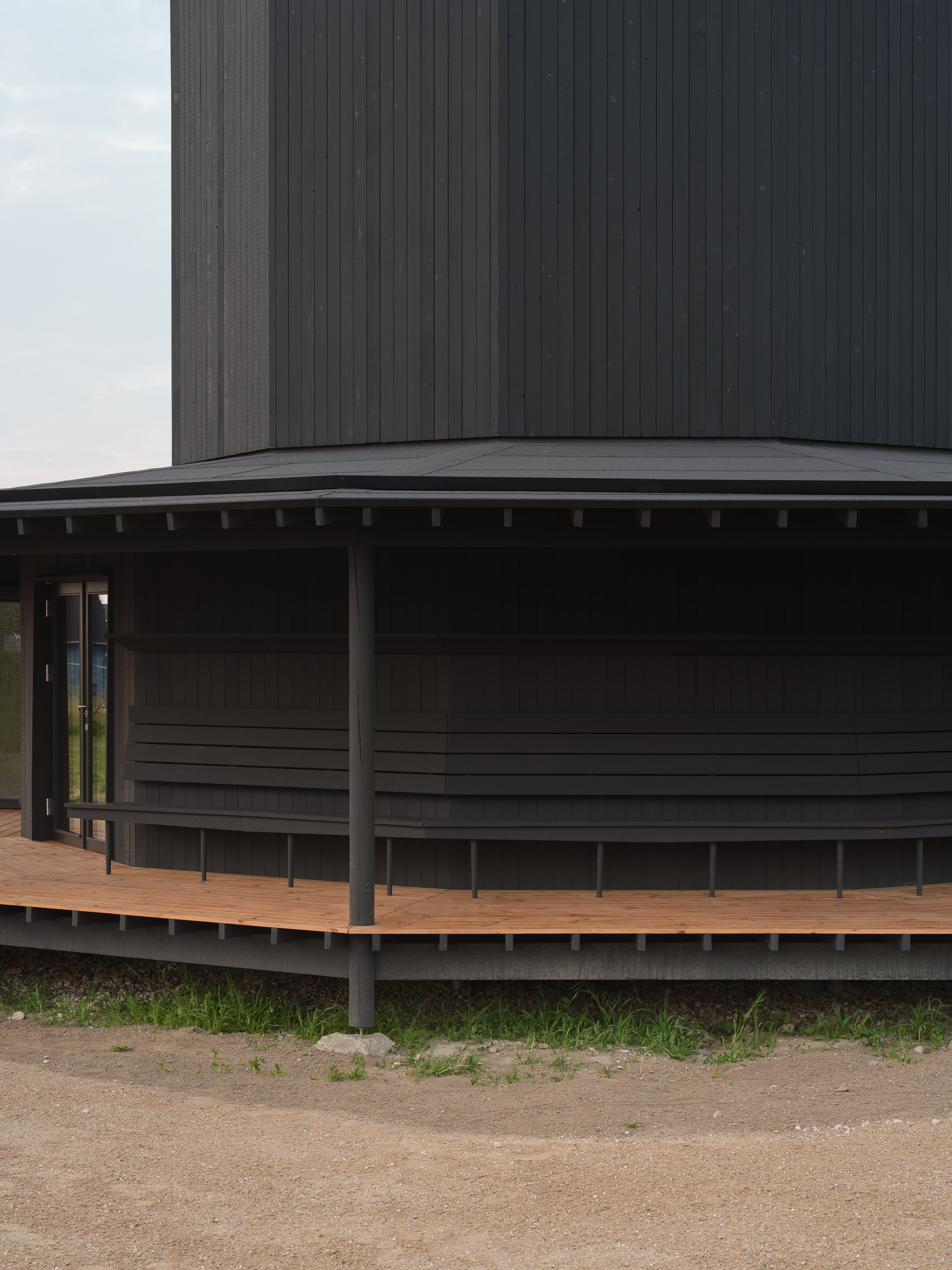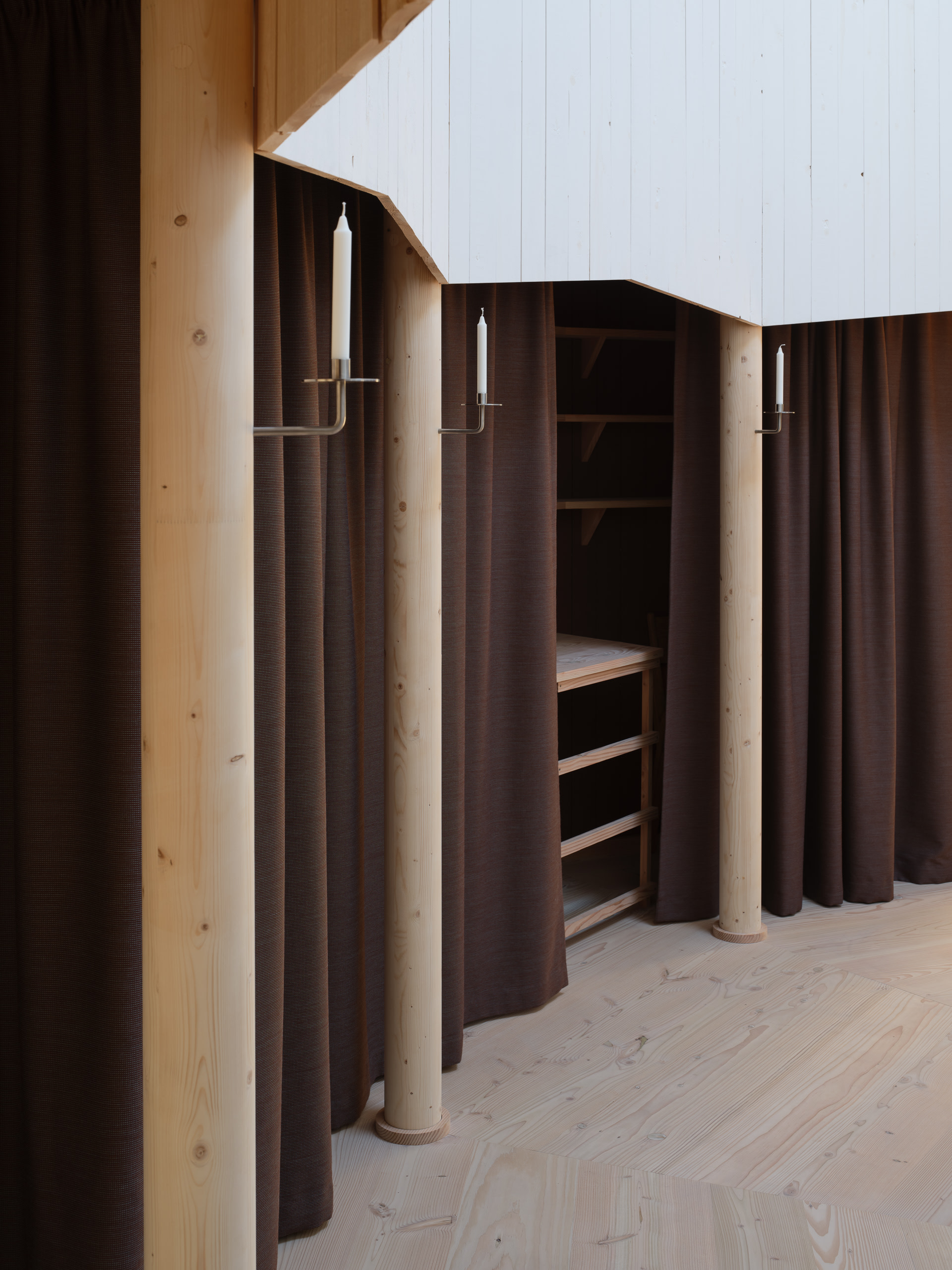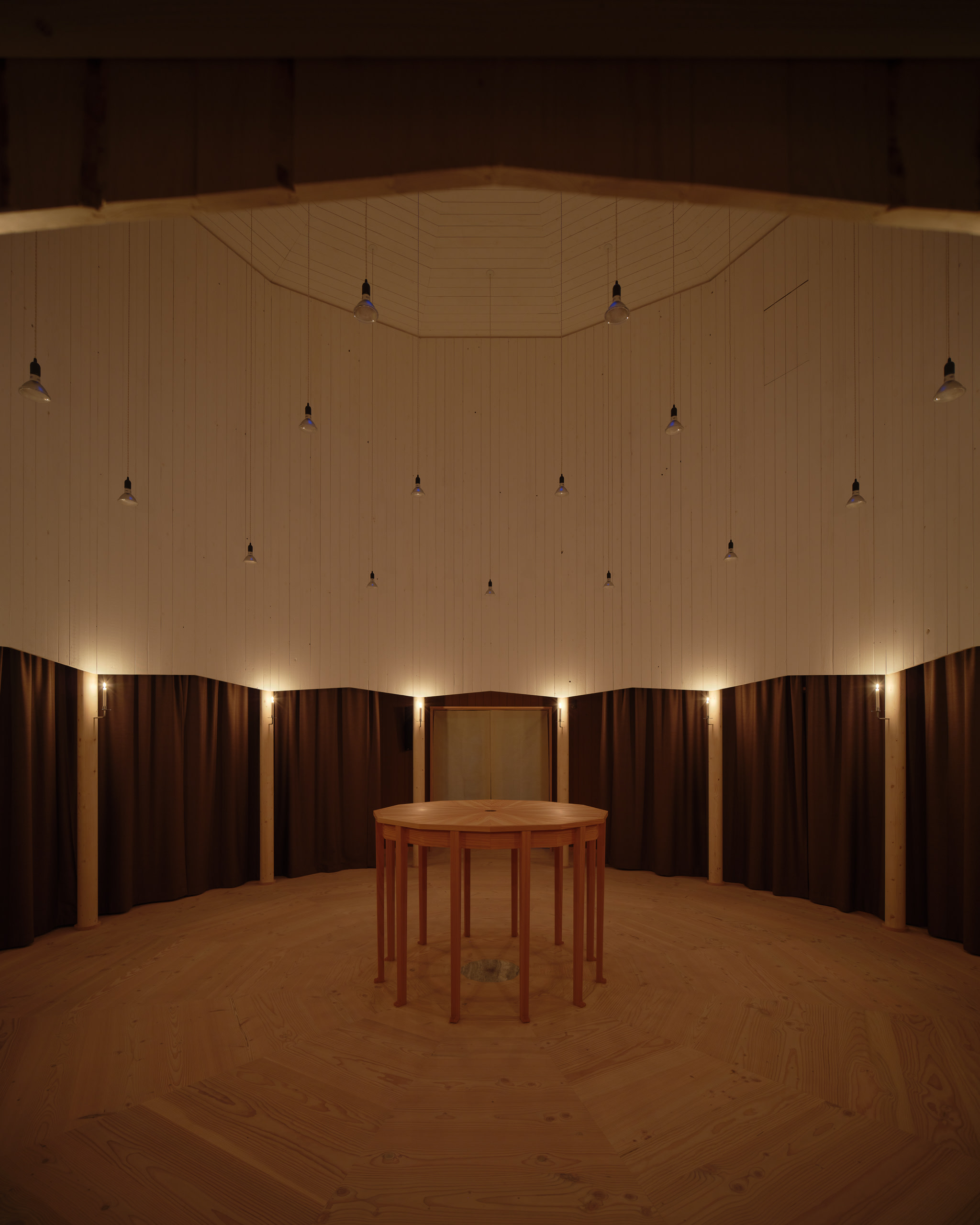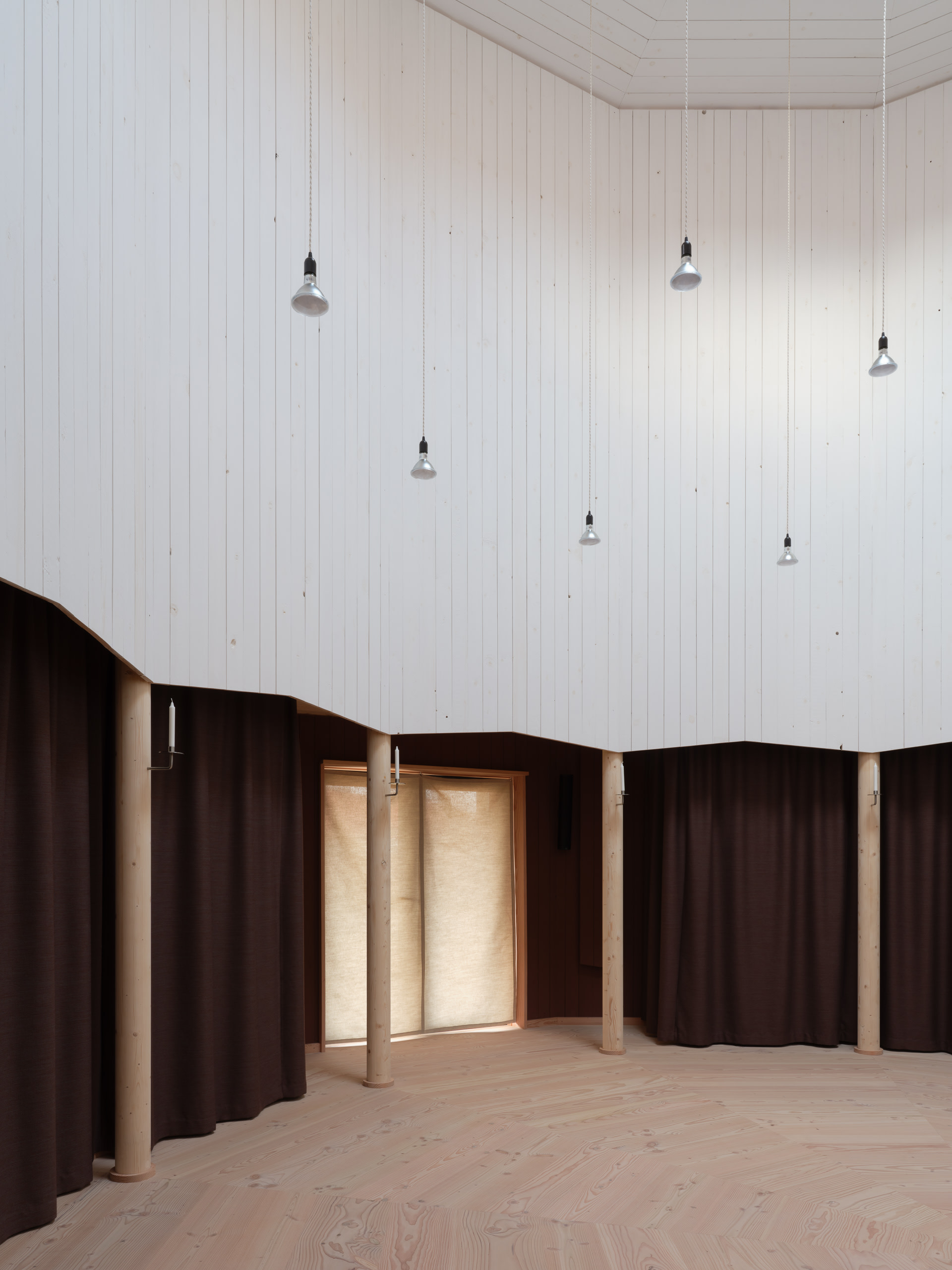Tiny Church Tolvkanten by Julius Nielsen OFFICE
A Tabernacle for Nordhavn
Twelve facets, each embodying one of Christ’s apostles, encircle a symmetrical, light-filled space crowned by a central oculus. This skylight opens the sanctuary to the heavens and imbues the interior with a quiet sense of transcendence.
The design emerges from a brief calling for a temporary church in Nordhavn (North Harbour district)—a growing Copenhagen neighbourhood in flux, without permanent ecclesiastical infrastructure. Rather than mimic traditional church typologies, the proposal reimagines the sacred space as something both archetypal and adaptable: a tent-like structure that could be disassembled, moved, and reassembled as needed, yet retain its spiritual gravity.



The church was envisioned not as a fixed monument, but as a contemporary tabernacle—grounded in Christian symbolism while responsive to the demands of mobility, conservationism, and scale. The twelve-sided plan references the apostolic circle and offers a non-hierarchical approach that supports communal gathering and liturgical flexibility.
The interplay of precise geometry and irregular, tactile materials gives the church a human expression—at once monumental and delicate, expansive and intimate — where the sacred emerges not through opulence and images but through presence, proportion, and care.




The material palette is humble yet distinctive, drawing from the site’s industrial shipyard context. Exterior timber is finished with a matte, black lime-based paint that provides both protection and gravitas in the local coastal climate. Inside, the walls are coated with earth-toned silicate paint, while the central ceiling is clad in whitewashed facade boards, identical to those used externally. The natural knots are left untreated, allowing resin to emerge over time—seen not as imperfection, but as chance encounter ornamentation.

The floor is made from whitewashed Dinesen Douglas fir planks in varying widths and lengths, laid in a particular web-like pattern that draws the observer in. Offcuts are reused for skirtings and door reveals.
The Douglas fir extends beyond floors to bespoke furniture— including a foldable communion table and baptism font—crafted by Danish carpentry Rammelisten and designed by Julius Nielsen OFFICE.


